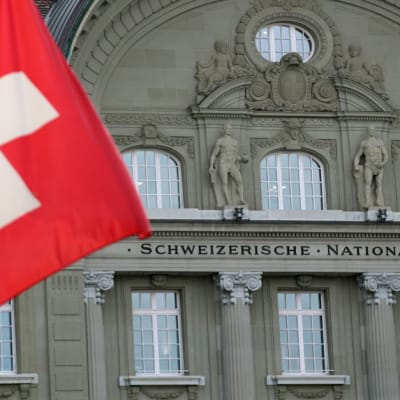MARKET COMMENTARY
US Treasury yields have had a downward bias since February, owing to the growing expectations of a US economic slowdown caused by uncertain US trade policies. UST10Y which started the year at what we have considered a high and attractive yield of 4.56%, has now settled at around 4.3% with front-end yields much lower at 4% or less. This is predicated on expectations that the Fed will likely cut two if not three times this year.
We believe that US trade policy is extremely aggressive, and the new Trump administration has weaponised tariffs and is utilising it as the main tool for its economic and global trade agenda. What has worried us, is that the use of tariffs has expanded from merely rebalancing trade, to (a) increasing government revenue, (b) arm twisting corporates to invest in the US industry, manufacturing and relocate its supply chain there, (c) intertwining US global security provision with the requirement to trade with the US.
Assuming Trump’s administration proceeds with the 25% tariffs to Mexico and Canada, either maintains or further increases the recently applied 20% tariffs to China, and further adds various restrictions to European and global trade, we believe US corporates will pause capex and hiring plans in order to preserve cash and understand economic outcomes. Retaliatory tariffs would slow global economic growth, and depending on how much of a slow-down the US faces, we would expect the Fed to cut by 2-3 times towards 3.5-3.8% and for the USD to weaken. There should be a flight to safety to EUR and JPY in FX, and Gold within commodities, and we could likely witness an uncorrelated increase in sentiment and asset price appreciation in the Chinese markets.
China has prepared its own policy response via its loose monetary and fiscal policy, where it plans to boost consumption domestically, and encourage its large corporates to lead in tech and proceed in global expansion. At the time of writing (14 Mar), the HK’s Hang Seng index is up 20% YTD while the S&P is down 6% YTD. Meanwhile, Hang Seng Tech index is up 32% YTD, and we continue to see a long runway ahead for leading China tech earnings and growth going forward. This should aid in broader asset growth and sentiment, including within the credit markets.
Specifically in IG, the US Corporate Investment Grade index has already witnessed widening from recent all-time tights of 75 bps (on a duration of 7 years) to 96 bps. This 20 bps widening is significant, but it comes from a very tight spread level. We believe that the rise in credit spread premia is fair, given the policy uncertainty emanating from the US. Similarly, global and Asia IG USD spreads have also been wider, providing us with a good opportunity for higher yields and spread rotation opportunities.
PORTFOLIO COMMENTARY
The LO Asia IG fund returned +2.71% on a YTD basis till end-Feb, versus the JACI IG benchmark at +2.13% for the same period. At the time of writing, the portfolio has a yield-to-worst of 5.8% (USD terms), Z-spread of 204 bps, and duration of 6.3 years.
Over the month, we added to three core new issues namely HK’s Hysan Development, Japanese life insurance Meiji Yasuda Life and Indian toll-road owner and operator Varanasi Aurangabad.
Hysan issued an attractively priced 7.2% Baa3 ($750m) rated non-callable subordinated bond, with use of proceeds to call their existing 4.1% bond. Hysan is a high-quality owner and lessor of shopping malls and commercial properties in the popular Causeway Bay district of HK. It has a sufficiently low LTV, high quality income stream, and hence a strong interest coverage which is expected to increase given their on-going expansion of their portfolio of assets. We believe the company will be able to delever despite already paying out healthy dividends, and expect the bond yields to drop by end of the year especially as the Fed cuts rates given this is a 5-year callable bond – which would be in the sweet spot of yield reduction as Fed cuts rates.
Meiji Yasuda Life Insurance out of Japan issued $2.1b of 10-year callable bonds (A3/A- rated by Moody’s/S&P) at an attractive 191 bps over UST10y, with a coupon of 6.1%. We see fair value for these bonds around 150 over UST10Y, and have added to this as a core holding within the fund. We already have existing exposure to Meiji Yasuda, and hence by this purchase have increased the weighting to 2.5% in the fund and hence making it the 10th largest fund position.
Lastly, the third new issue we added was Varanasi Aurangabad which is a toll-road entity in India, owned by a global entity of ROADIS which is an infrastructure company in turn owned by Canadian pension fund Public Sector Pension (PSP). The Indian entity owns a long-term highway concession consisting of a 192m highway between Varanasi and Aurangabad which was awarded to them in 2011. The highway is part of India’s Golden Quadrilateral, connecting major industrial and agricultural cities. The bonds have a final maturity of 2034, have security over the highway concession asset, and has a sinkable amortisation and mandatory cash sweep utilising the cashflows from the toll road. We have found this asset attractive with bond coupon of 5.9%, especially with its diversification offered vs other sectors amongst our fund holdings.
Amongst secondary market opportunities, we added to existing positions in quasi-sovereign Thai Oil 2048 senior bonds at yields over 6.5%. We also purchased HK’s Nanyang Commercial Bank 2034 (2029 call) T2 bonds at an attractive 150 bps yield over UST5Y.
To raise cash, we sold out of our remaining Australian AT1 positions Westpac and Macquarie Bank, which have been our long standing positions and benefited from changes in Australian regulator APRA’s decision to reduce the effectiveness of these AT1 instruments (i.e. no longer capital effective for the banks, so they will have to be called). We sold them at considerably lower spreads than their average traded spreads over the past few years. We also took profit (on spread basis) on Japan’s Asahi Mutual Life’s bonds as its spreads have rolled down to the low 100bps with low DTS (Duration Times Spread) upside owing to the shortened duration. Lastly, we trimmed some Genting Malaysia bonds, thus reducing our long-standing overweight there.
The portfolio continues to be well diversified and should offer upside from the strong China recovery and capital markets sentiment, away from the policy uncertainty out of the US and the volatility that its markets are facing.
Thank you for your continued support.
DHIRAJ BAJAJ
On behalf of the LOIM Asia Fixed Income team







